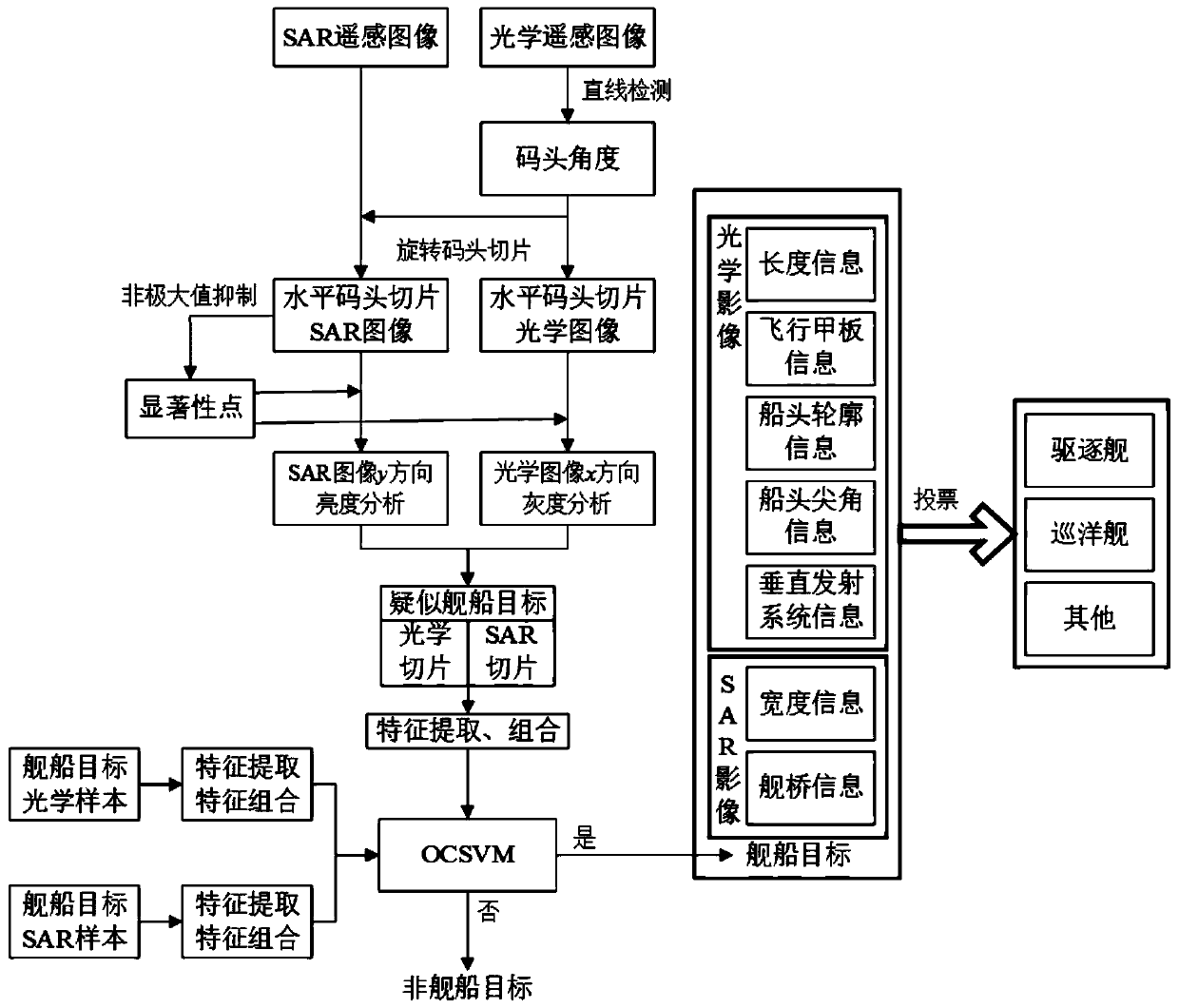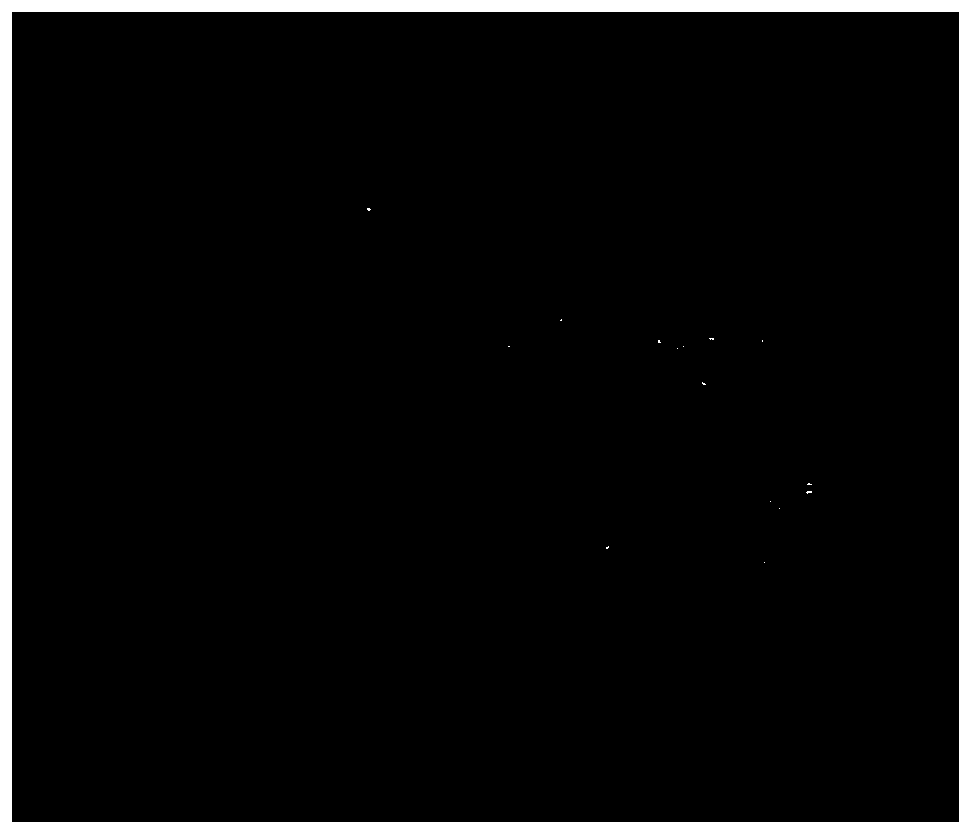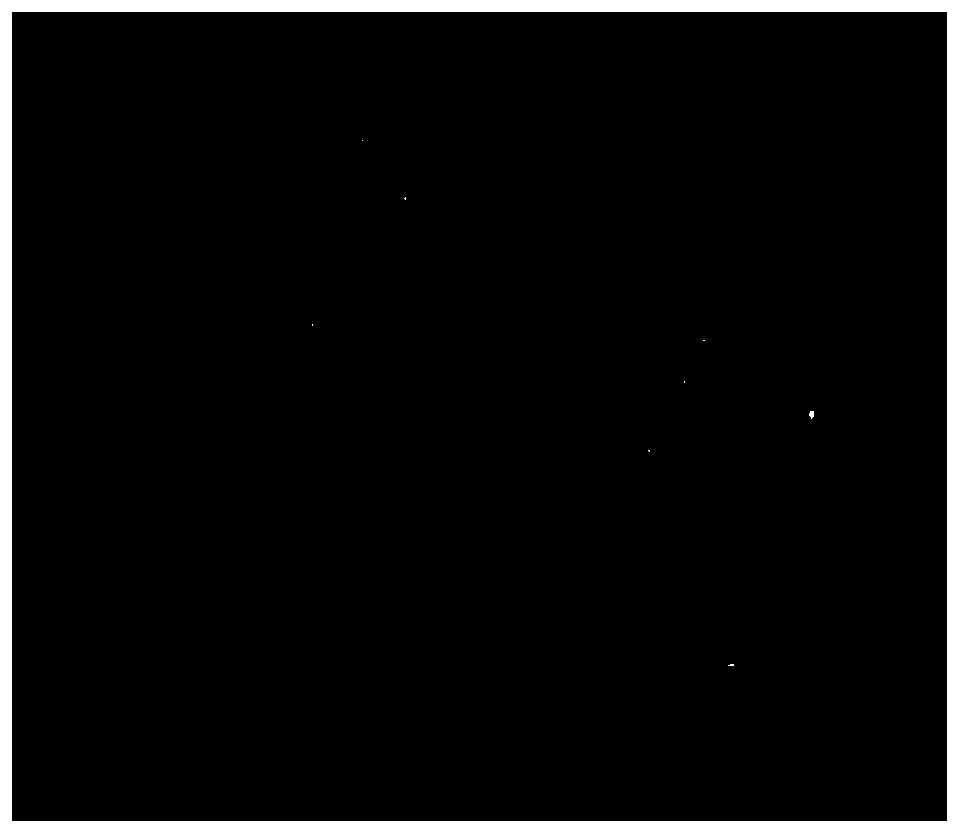Target recognition method based on multi-source image joint shape analysis and multi-attribute fusion
A target recognition and multi-attribute technology, applied in the field of remote sensing image target detection and recognition, can solve the problem of low accuracy of ship target recognition and achieve the effect of improving the recognition accuracy
- Summary
- Abstract
- Description
- Claims
- Application Information
AI Technical Summary
Problems solved by technology
Method used
Image
Examples
specific Embodiment approach 1
[0053] Specific implementation mode one: combine figure 1This embodiment is described. The specific process of the target recognition method based on multi-source image joint shape analysis and multi-attribute fusion in this embodiment is as follows:
[0054] Step 1. Manually register (in order to make the acquired optical remote sensing image and SAR remote sensing image have the same target position) optical remote sensing image and SAR remote sensing image, only use optical remote sensing image for line detection, and obtain a large number of slices of suspected ships docking at the dock , and according to the straight line angle, rotate the dock slice to the horizontal;
[0055] Step 2. Carry out joint shape analysis on the optical remote sensing image and SAR remote sensing image of the horizontal wharf slice to obtain the coordinates of the suspected ship, that is, obtain the length and width information of the ship, and extract the suspected ship slice corresponding to ...
specific Embodiment approach 2
[0060] Specific implementation mode two: combination Figure 2a , 2b This embodiment is described. The difference between this embodiment and the specific embodiment 1 is that in the first step, the optical remote sensing image and the SAR remote sensing image are manually registered, and only the optical image is used for line detection to obtain a large number of suspected ships docking at the dock. Slice, and according to the angle of the line, rotate the dock to slice horizontally; the specific process is:
[0061] Step 11. Manually register the optical remote sensing image and the SAR remote sensing image. On the optical remote sensing image, according to the principle of uniform gray distribution information around any point, select the seed point on the sea surface. The selection of the seed point should satisfy the following formula:
[0062]
[0063] The point that satisfies the attribute P(x,y) is the seed point, where U represents the neighborhood, I is the gray...
specific Embodiment approach 3
[0067] Embodiment 3: The difference between this embodiment and Embodiment 1 or 2 is that in the second step, the joint shape analysis is performed on the optical remote sensing image and the SAR remote sensing image of the horizontal wharf slice to obtain the coordinates of the suspected ship and extract the corresponding coordinates The suspected ship slice; the specific process is:
[0068] Step 21. Slicing in the optical and SAR docks rotated to the horizontal (eg Figure 4a , 4b ) to detect ship targets, first use SAR images to quickly determine salient points through non-maximum suppression (such as Figure 4c , 4d ), and then perform grayscale analysis on the x-direction of each salient point in the optical image to find the intersection points of the bow, stern and seawater (such as Figure 5a , 5b ), so as to obtain the abscissa of the ship;
[0069] Step 2 and 2. Reuse 100 pixels on the left and right sides of each salient point in the SAR image (with each salie...
PUM
 Login to View More
Login to View More Abstract
Description
Claims
Application Information
 Login to View More
Login to View More - R&D
- Intellectual Property
- Life Sciences
- Materials
- Tech Scout
- Unparalleled Data Quality
- Higher Quality Content
- 60% Fewer Hallucinations
Browse by: Latest US Patents, China's latest patents, Technical Efficacy Thesaurus, Application Domain, Technology Topic, Popular Technical Reports.
© 2025 PatSnap. All rights reserved.Legal|Privacy policy|Modern Slavery Act Transparency Statement|Sitemap|About US| Contact US: help@patsnap.com



